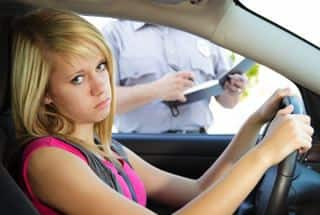If the thought of your teenager sitting behind the wheel of a car scares you to death, it doesn’t mean that you’re overreacting. Based on traffic statistics, your fears for your child’s safety are well founded. That’s why it’s important for parents to do everything they can to help teens become skilled and careful drivers.
Car accidents are the leading cause of death for teens in America, accounting for more than one in three deaths in this age group, according to the Centers for Disease Control and Prevention (CDC).
In 2011, an average of seven teens ages 16 to 19 died each day from car accident injuries. These young drivers are four times more likely than older drivers to crash for each mile driven. That’s why having a teenager on your policy can greatly increase your auto insurance rates.
KEY TAKEAWAYS
- As a parent you shouldn’t allow any passengers for the first few months after your teenager receive their driving license.
- Driver licensing programs are designed to increase supervised driving time. And these programs also helped in reducing teen fatalities.
- Before getting a full license, teen drivers receive a learner’s permit which restricts nighttime driving and the number of passengers.
- To keep your teen safe on the road, make sure their car has safety features like functioning airbags and anti-lock brakes.
Teens are easily distracted drivers
 Greg Haberman, owner of Teen Driving School in San Diego, says teenagers are quick learners and often master the fundamentals of driving very quickly. Their biggest challenge is concentrating. Most young drivers are easily distracted, particularly in their early months of driving.
Greg Haberman, owner of Teen Driving School in San Diego, says teenagers are quick learners and often master the fundamentals of driving very quickly. Their biggest challenge is concentrating. Most young drivers are easily distracted, particularly in their early months of driving.
“They are preoccupied by other things than traffic: their CD players, the radio station, cell phones,” he says. “They are not focused on the street.”
The good news is that teens can be schooled to be good drivers who avoid accidents and help hold down their family’s car insurance quotes. What they need is strong parental involvement and adequate supervised time behind the wheel. As a parent, you shouldn’t be reluctant to enforce strict rules about safe driving. Be prepared to confiscate the keys, if necessary. Let your teen know that driving is a privilege they may lose if they don’t follow your guidelines.
“If you do not feel your son or daughter is ready, do not let them drive,” says Phil Berardelli, author of the book “Safe Young Drivers: A Guide for Parents and Teens.” “No one under 18 in America can drive without parental or guardian permission.”
7 signs to watch for
Here are seven signs that you may need to limit or even suspend your teenager’s driving privileges:
-
Too many passengers. According to the CDC, crash risks go up when teens drive with other teens. Nearly two out of three teen crash deaths that involve 16-year-old drivers happen when a new driver has one or more young passengers. Berardelli recommends allowing no passengers at all for the first few months after your child receives his or her license. “After they get the license, the first 100 days are the deadliest,” he adds.
-
Driving at night. Driving safely at night, when visibility is greatly diminished, requires maturity and experience. If your new teen driver is on the road after dark, it’s bad news. The CDC reports that nighttime fatal crash rates for 16-year-olds are nearly twice as high as daytime rates.
-
Using drugs or alcohol. This is a zero-tolerance issue. If you care about your teenager, do not look the other way if you find evidence of drug or alcohol use. Let your child know that he or she is free to call you if they find themselves in a situation where other teens are drinking and have no safe way to get home. In all 50 states, driving with a blood alcohol content level at or above 0.08 percent illegal. There is no acceptable blood alcohol content level among drivers who are under the legal drinking age.
-
Calling you on the phone while they are driving. While cellphones are great for staying in touch with your kids, don’t encourage them to call you while they are driving. The same goes for texting or fiddling with the car stereo system. Such distractions greatly increase the risk of accidents. Even worse, of course, is texting while driving.
-
Driving while sleepy. If teens appear fatigued due to lack of sleep, do not allow them to drive. Encourage your child to get enough rest. To set a good example, aim for getting eight hours of sleep each night yourself.
-
Not wearing a seat belt. It’s true that you can’t always monitor you teenager’s driving habits, but this is one rule you must stress. Wearing a seat belt greatly increases your chances of avoiding serious injury during a car accident. Remind your child of this fact.
- Too many dings. If the car your teen drives has numerous dings and scratches, it may be a sign that the driver isn’t being careful. We all pick up small dents in parking lots, but if you notice a trend, ask your teen about it. Let him or her know that you’re paying attention and that there are consequences for careless behavior.
Teenage driving is improving
On the positive side, the number of teenagers who died in motor vehicle crashes was 8,748 in 1975 compared to 2,650 in 2011, says the Insurance Institute for Highway Safety. One thing that has been helping reduce teen fatalities is graduated driver licensing programs. They are designed to increase supervised driving time. Forty-nine states and the District of Columbia now have a three-stage licensing system, but they vary in strength.
According to the National Safety Council, graduated programs begin with a learner’s permit that allows driving only while supervised by a licensed driver. Before receiving a full license, the teen receives a provisional one that allows unsupervised driving under restrictions that limit nighttime driving and the number of vehicle passengers. The goal is to give the student driver satisfactory training and experience before allowing unlimited access to a motor vehicle.
QuickTake
Parents need to be observant
Instructor Don Crites, president of the Oregon Driver Education Center, says parental involvement is essential to make graduated programs effective. “On the parent’s side, it’s finding the time and making a commitment to spend time in the car with the teens.”
While there may be clear warning signs that the teenage driver in your family needs more supervision, not every parent sees them, says Crites, who is based in Salem, Ore. He recalls being approached by a stressed-out mother of a newly licensed teen, following a presentation he made at a seminar. “She said, ‘I am so sick of paying for my son’s speeding tickets, what do I do?'” The answer is to take away the keys.
Many drivers in training are given use of the family’s oldest and least reliable car, to prevent them from damaging a newer model. While it isn’t necessary to buy a new car, make sure your teen’s vehicle includes sufficient safety features, such as functional airbags and anti-lock brakes.
Finding the best auto insurance quotes
The Automobile Club of Southern California says one way to help put your teen driver on the right path is to enroll him or her in a driving school that encourages parental involvement. Once your teen is in the market for insurance, be sure to shop for the best car insurance quotes. Ask about discounts for such things as driver’s education courses and good grades.
Remember, if your teen develops a checkered driving record, no amount of comparison shopping will help you avoid high auto insurance rates.






